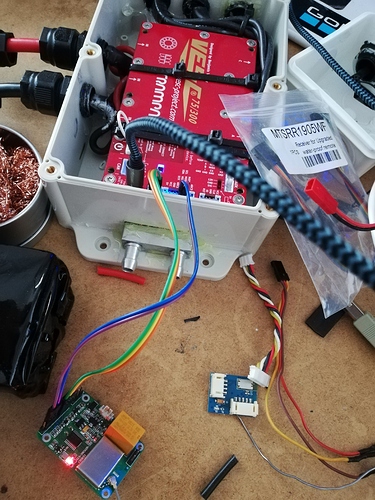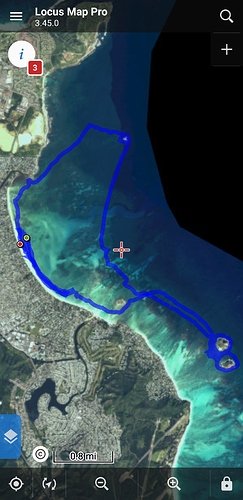More likely large inrunner. FR’s motor is close to 2kg if memory serves.
I used the setting for the largest inrunner. Then let it run the auto detect. If it fails the auto detection, try again. Took me a couple tries. Make sure the connections are all good.
Nice box! Make sure to fill the box 1/2" with corrosionX. The VESC loves to swim in corrosionX. It will protect it from moisture damage.


Were you able to perform similar speed tests on the Fliteboard ?
Hi.
It was my first time on the Flightboard so, I didn’t attempt max speed. But, when we were on our own boards I had no problem catching up to the Flightboard, and had to wait for him to catch up to me several times.
We were both impressed with the performance of my board compared to the Flightboard.
Unfortunately, we didn’t do any specific comparison tests.

Ok is done for the motor in vesc tool thank:)
But what is the diagram for the receiver maytech connect to the esc? Because when in push the trottle is just on/off for the motor reaction…
I dont see how your are connected the receiver tp the vesc?
Picture looks correct. You also need to connect BAT and MOT on the receiver. BAT goes to positive on battery and gives you battery percentage on the remote LCD. MOT goes to one of the phase wires on the motor and gives you RPM on the remote LCD.

Got some drone footage.

Hi guys.
I’ve been playing around with my average speed, and how that correlates to ride time, and distance.
Looks like an average speed of 13mph (21kph) gets me about 15 miles (24km) range, and 1h20 - 1h30 ride time. However, if I take it easy (no high throttle), and pick the average speed up to 15mph (24kph) the ride time goes down, but the range increases substantially! 18.5 mile (30km) range on my last ride! 1h12 ride time!
Max endurance VS max range! So cool!

I like the imperial / metric unit conversion, much easier for me 

You still have more than 1h ride time which is really nice. I actually think of building my pack and might go 14S14P like yours man, wanna enjoy that ride too haha
Do it! 




14s14p. It’s the gold standard! Make sure to use at least 6awg wire on everything. (8awg in the mast is ok if that the largest you can fit, but not ideal. The FR motor uses 6awg in the mast with thin wall insulation).
People don’t understand that just because smaller wire will work, doesn’t mean you’re not losing lots of efficiency!
This is why my board performs better then even the Lift board. Even Lift cheaped out on the wire in the battery, and to the electronics box! Run the voltage drop calculator. Build your battery and wiring to less then 2% voltage drop!

That’s what I am planning to do 
Where do you source your 8 or even 6 awg cable ? I have ordered 2 8awg types, one at 9,6033€/m and another one at 6,03€/m.
The cheapest is better and have largest copper area, wasn’t expecting this…
I have tried and looked already on digikey / farnell / superworm, those deosn’t look great enough to me. And I don’t want to pay more than 12€/m for 8 awg cable neither…
Looks great (price is really nice too !), I will order some to test, however, for marine application you should consider tinned copper wire to avoid any possible contact issue if moisture find its way in the cable.
I solder all connections then do multiple coats of Conformal coating. The wire soaks it up, down into the insulation, sealing it off. I haven’t had any corrosion issues.

Hi.
Yes. Tinned copper wire is good for small stuff because the corrosion will actually cause the wire to corrode through, and fail.
Tinned wire in 6 gauge would be prohibitively expensive. In my experience, large gauge wire will never corrode enough to fail inside the insulation. It’s just too much copper. Solder joints are subject to corrosion. And it’s always a good idea to seal the cut ends of the insulation to keep the moisture out of the wire as explained above.
Just sharing my experience. Hope the information helps someone.

I’m just getting started with the vesc. So I could also be wrong. I believe you do not need the BAT or the MOT wire because if you select data source on your maytech that data all comes from the VESC using the RX/TX wires.
I don’t know. Maybe someone who knows will chime in. I hooked mine up.

Congrats for your job and posts. A good thread to follow and learn about the E-foils.
I’m very insteresting by your second project, the one with the flipsky 65150 motor.
It looks to be enough to fly in terms of power and your battery pack allow a long range/riding time. And I’ll look much more in details your future posts before ordering my parts.
Could be nice to push the math a bit further to optimize the performance by using the engine efficiency curve.
Choosing the adequate area of this curve to choose the best propeller design for a cruising speed desired. It’ll be tricky, but the battery duration will be extended.
But your actual perfs are quite good and 1Hour of fun with this toy must be very very cool.
Congrats
Thx. I have tested the 65161 motor. But, I run it with a different wing. So, it’s hard to compare the two.
As far as efficient propellers, I think it will be hard to beat the FR prop.




